Beyond 'Whip It': Devo exhibit looks at band's bloody Kent State origin, music videos, art
- Oops!Something went wrong.Please try again later.
Think “Devo,” and you probably think about the “Whip It” music video with its snapping leather whip and bright red “flower pot” hats.
But there’s much more to the Ohio art-rock band than that iconic 1980 video. Those hats, for example, aren’t upside-down flower pots ― they’re “energy domes” meant to harness sexual energy (or, at least, that's what band members told perplexed journalists during interviews).
And while the Ohio band might come off as a novelty act to some, there’s a much deeper, darker reason they exist: The 1970 Kent State University shootings and the resulting feeling that the world is getting worse every day.
Humanity wasn’t evolving.
It was de-volving.
“That really was the thing that sort of radicalized them,” says Jade Dellinger, director of Bob Rauschenberg Gallery at Florida SouthWestern State College in south Fort Myers. “It also became the catalyst for creating this philosophy, which is really the underpinning of everything to do with Devo. They were initially The De-Evolution Band.”
A new retrospective at Rauschenberg Gallery examines that dark underpinning, the band’s Dada-inspired absurdist humor, its pioneering music videos and everything else Devo ― just in time for the band’s 50th anniversary. “Devo 5-0: The Beginning Was The End” coincides with Dellinger’s new book “The Beginning Was The End: Devo in Ohio” (set for an Oct. 10 release).
It’s the second book Dellinger has co-written about the band. He’s a longtime fan who discovered Devo as a teenager in the late ‘70s and often wore an energy dome hat to high-school dances.
“I was interested in art,” Dellinger says. “And it was clear to me this was not like the other stuff you were seeing on MTV. … It was so clearly kind of choreographed.
“It was apparent that everything they did ― there was purpose behind what they did. And they were telling stories through film and video.”
Devo exhibit at FSW: 20 years in the making
The FSW exhibit is the biggest, most comprehensive retrospective ever assembled on the band, Dellinger says. It follows other Devo-related events at the gallery, including a 2016 lecture with band co-founder Gerald “Jerry” Casale and 2021's “Postcards for Democracy” exhibit organized by Devo frontman Mark Mothersbaugh and collaborator Beatie Wolfe.
Dellinger hopes to eventually take "Devo 5-0" on tour to Ohio and elsewhere.
“For 20 years, I’ve been wanting to make a Devo retrospective,” he says. “None of this stuff has ever been shown. We’re the first.”
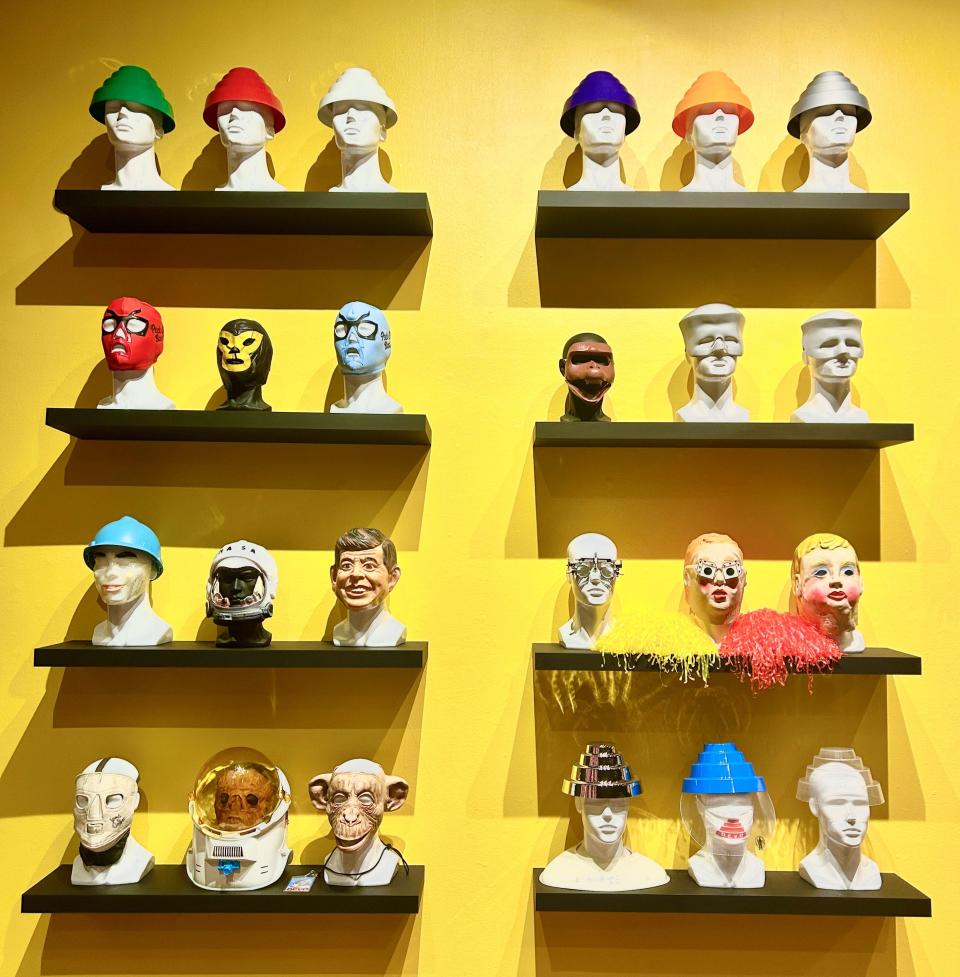
The Rauschenberg Gallery exhibit will include upcoming lectures (dates to be announced) with producer Robert Margouleff (Devo's 1980 album “Freedom of Choice”) and founding Devo member Bob Lewis.
Lewis says he looks forward to visiting Fort Myers, meeting fans and seeing the show.
“I’m surprised and delighted,” he says about the retrospective. “I’m glad people will get a chance to see it and maybe take a second look. And maybe play the songs again. ‘Listen up kids! It’s not too late!’”
How the Kent State shootings formed Devo
Devo sprang from a fertile arts scene at Kent State University, Lewis says. They got a lot of their ideas from various artists, philosophers and writers at the time. For example: Those tongue-in-cheek energy dome hats ― also known as “orgone accumulators” ― came from the work of what Dellinger calls a “quack psychoanalyst/inventor” in the 1950s.
But if it wasn’t for the Kent State shootings, Lewis says, the band members likely would have graduated from college and gone on to various non-music careers.
“Had May 4 not happened, Devo wouldn’t have happened either…” Lewis says. “All of a sudden, I didn’t want to be going to college anymore. Because the last time, they were shooting at us.
“So we took some of our disillusion and started to examine the societal norms that we were inside of.”
During the shootings, four unarmed students ― two of whom were close friends of the band ― died when the Ohio National Guard fired into a Vietnam War demonstration. Nine more students were wounded.
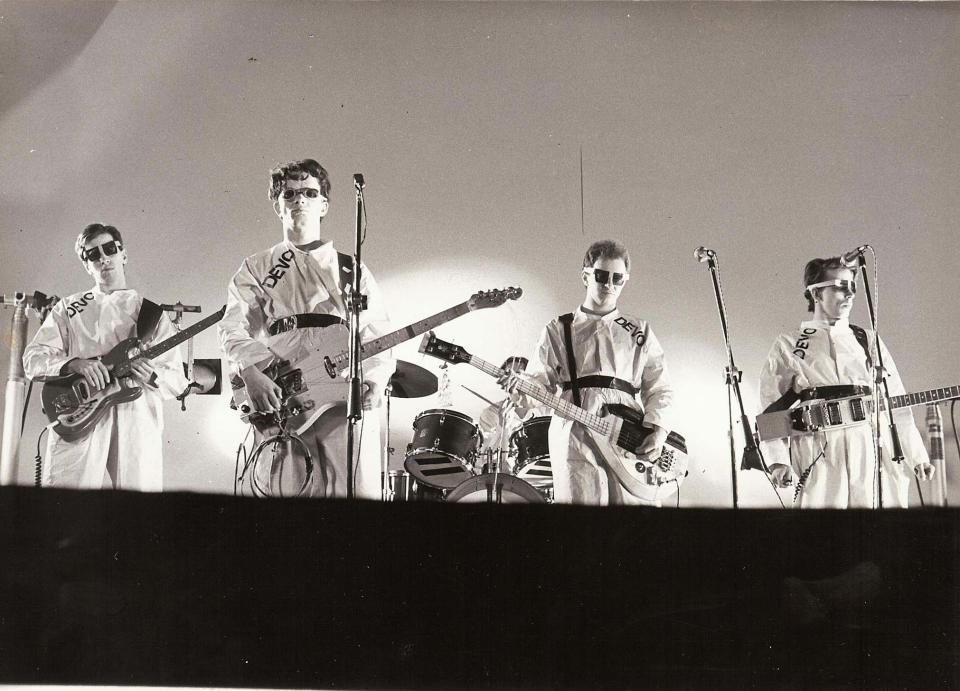
Lewis ― who left Devo in the mid-70s before its breakthrough success in the 1980s ― says he and other band members were disillusioned about the shootings, the Vietnam War and a general feeling that the United States government was corrupt.
“The entire baby boom generation was experiencing a bit of a disillusion,” Lewis says. “Because, I think, we grew up thinking ‘We’re the USA. We’re always the good guys.’ … But on closer inspection, you find out, ‘Well, wait a minute. Maybe we’re not the good guys.’"
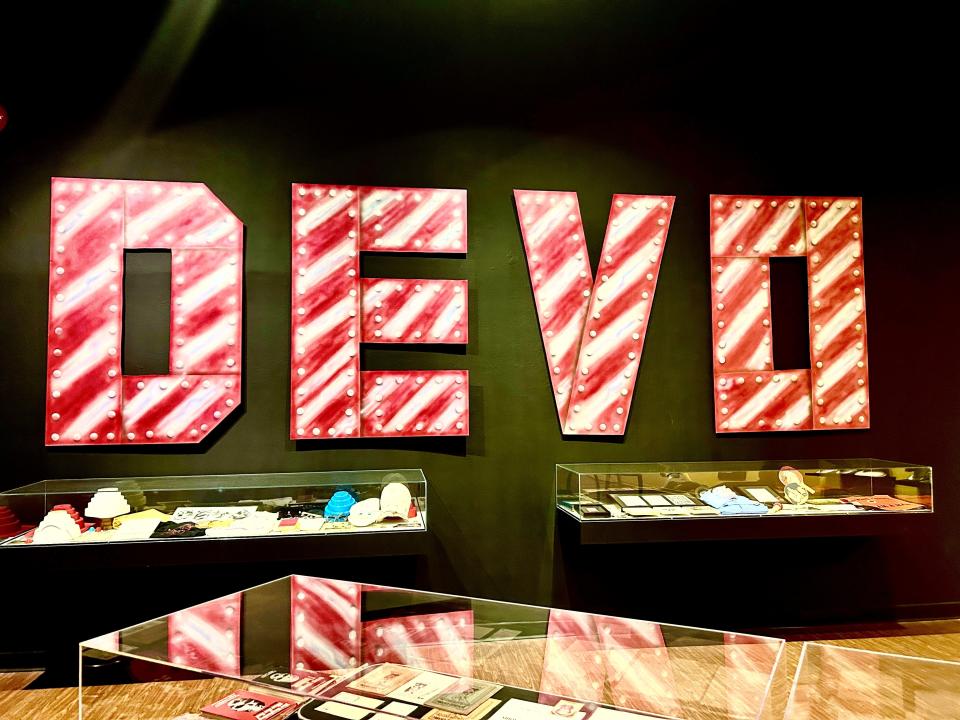
Things haven’t gotten any better since then, Lewis admits. And humanity has continued to devolve.
“Thirty percent of the population doesn’t believe in evolution,” he says. “They don’t believe in vaccine science. It’s kind of crazy.”
More about the 'Devo: 5-0' exhibit
The exhibit features artifacts from throughout the band’s career, plus music videos and art films playing nonstop on a movie screen.
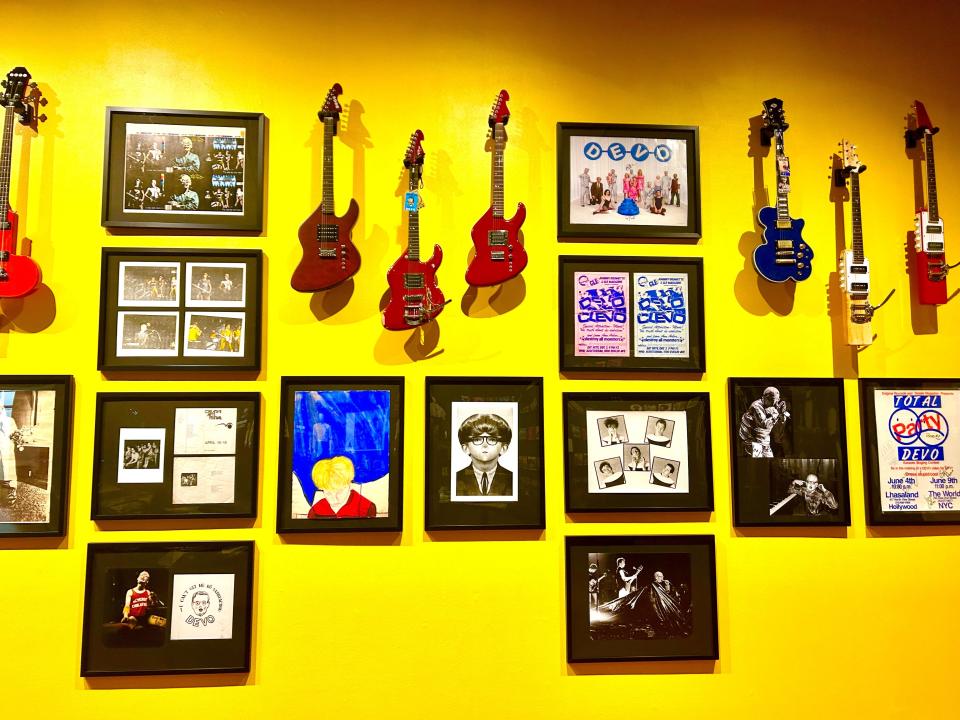
Highlights include:
Handwritten lyrics to “Whip It,” “Girl U Want,” “Be Stiff” and other Devo songs
Concert fliers and posters
Guitars used onstage and in the band’s music videos
The band’s famous yellow jumpsuits and other stage-worn costumes
One of the “Booji Boy” baby masks that frontman Mark Mothersbaugh wore onstage, meant to represent the “infantile spirit of de-evolution.” “The whole idea was: If you create a character of a baby, then it can be the excuse for everything,” Dellinger says. “You can’t blame a baby if he destroys the world.”
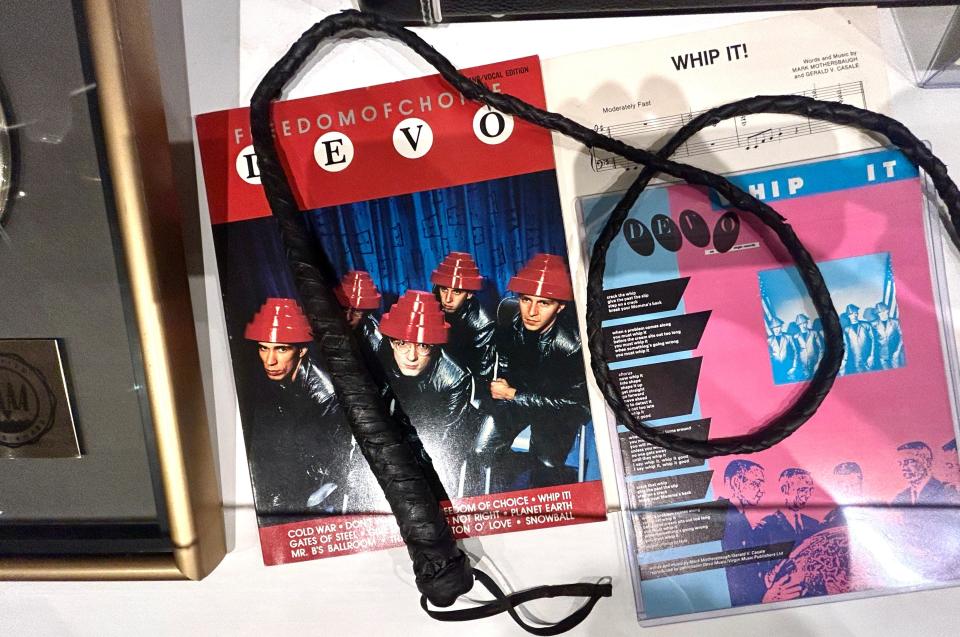
A Devo skateboard used by pro skateboarder and punk-rock singer Duane Peters of the band U.S. Bombs
A dedicated “Whip It” display, including Bob Mothersbaugh’s guitar and one of the whips from the music video
Album concept art
An oversized version of Devo’s first logo, originally created by airbrush artist Gary Jackett, turned into an oversized stage prop for the band’s “Jocko Homo” music video and recreated for the "Devo 5-0" exhibit by Jackett
And, of course, lots of the band’s famous energy dome/orgone accumulator hats in various colors ― including many worn by the band onstage.
Lewis says he’s happy people will be getting a fresh look at the band in the exhibit. Fifty years later, he’s still surprised that this weird art band ever broke through to the masses ― even if people still know them mostly for “Whip It.”
“I’m glad,” Lewis says. “And if it prompts anyone to think about and examine what’s going on around them and what’s going on in the United States and the world, then I’m all for that.”
“DEVO 5-0: The Beginning Was The End” continues through Dec. 9 at Bob Rauschenberg Gallery at Florida SouthWestern State College, 8099 College Parkway S.W., Building L, south Fort Myers. Admission is free.
Lecture dates will be announced later. For more information, call 489-9313 or visit rauschenberggallery.com.
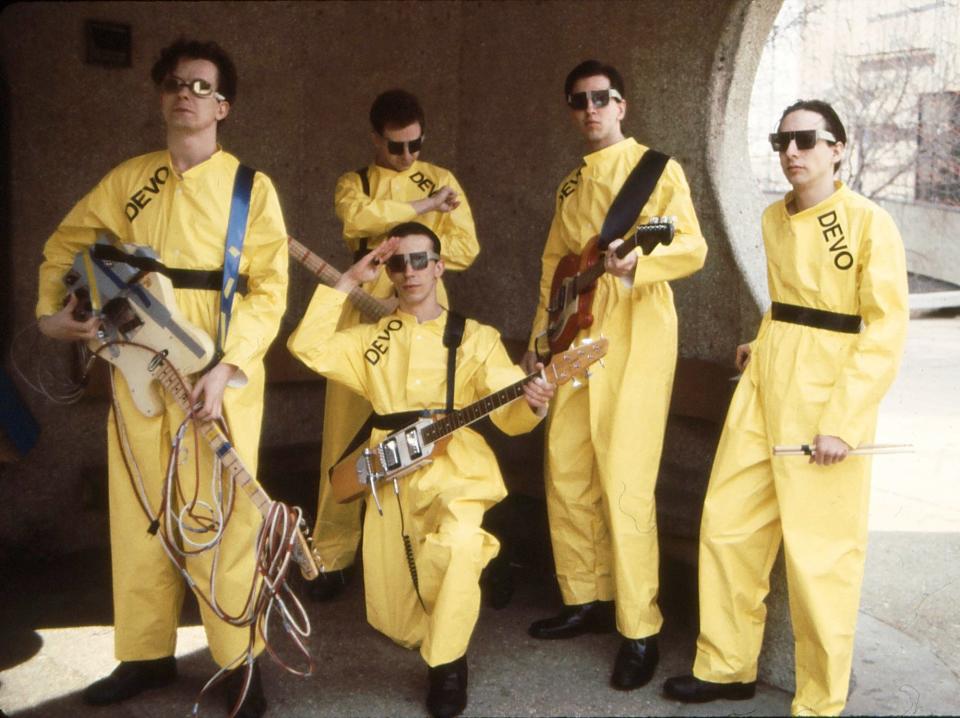
Charles Runnells is an arts and entertainment reporter for The News-Press and the Naples Daily News. To reach him, call 239-335-0368 (for tickets to shows, call the venue) or email him at crunnells@gannett.com. Follow or message him on social media: Facebook (facebook.com/charles.runnells.7), X (formerly Twitter) (@charlesrunnells), Threads (@crunnells1) and Instagram (@crunnells1)
This article originally appeared on Fort Myers News-Press: Devo exhibit at Fort Myers' Rauschenberg Gallery: 'Whip It' and more

